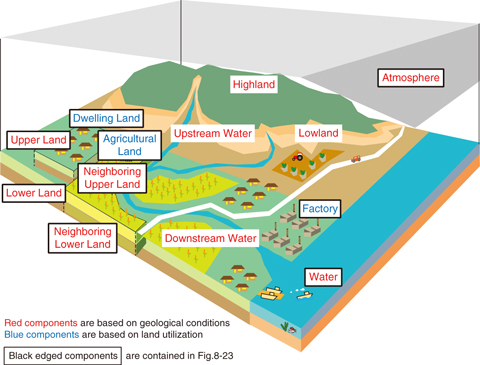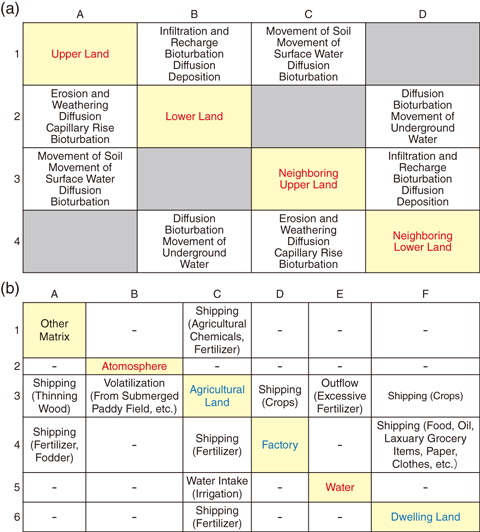
Fig.8-22 An example of the components of the surface environment

Fig.8-23 Examples of the arrangement of mass-transport processes between components in the form of a “basic matrix”
In assessing the safety of geological disposal of radioactive wastes, exposure doses in the surface environment where humans live (known as the biosphere) are modeled and assessed. For this purpose, the transport processes of radionuclides derived from the repository as well as human-exposure processes in the surface environment are set based on the targeted surface-environmental conditions.
The surface-environmental conditions to be targeted have not yet been decided in Japan; thus, it is important to prepare a modeling method for biosphere assessment that can respond to disposal-site candidates flexibly when these are realized in the future. For this purpose, a modeling method that can be applied to various surface-environmental conditions is developed in this study.
A special feature of the modeling method proposed in this study is that mass-transport processes (e.g., movement of water or soil, and transport of radionuclides from the repository accompanying those movements) and exposure processes (e.g., drinking water containing radionuclides) are compiled widely for various surface-environmental conditions in a matrix-form (this is called a basic matrix). This makes it possible to construct biosphere-assessment models easily by simply abstracting transport and exposure processes from existing basic matrices, which are related to the surface-environmental conditions to be assessed. In compiling the basic matrix, first, generic components of various surface environments (e.g., upper land, water, and agricultural land shown in Fig.8-22) and their positional relations (e.g., horizontal, vertical, etc.) are identified. Then, transport processes between those components owing to natural phenomena in response to geographical conditions are compiled in 17 basic matrices (Fig.8-23(a) shows an example of this type of basic matrix) and transport processes between components owing to human activities in response to land utilization are compiled into 8 basic matrices (Fig.8-23(b) shows an example of this type of basic matrix). The exposure processes from those components are also compiled, with consideration of human activities in each component.
This method may help to construct an effective biosphere-assessment model and make it easy to check the consistency (or lack thereof) among the components and processes being considered. This method could also reduce the dependency of the modelling sufficiency based on the modelers’ knowledge and experience by commonly using basic matrices. Another advantage of this method is the traceability of modeling processes (just record the results of abstraction of components and processes from existing basic matrices and note those reasons); therefore, past biosphere-assessment models can be efficiently reviewed and/or reassessed in the future.
The applicability of this method will be examined under various surface-environmental conditions and, if needed, further improvements will be made.